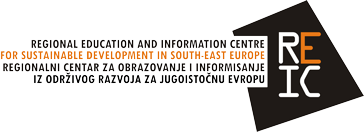POSITION PAPER “ENERGY AND CLIMATE PLANNING ALBANIA 2030”
Albania is a country in Southeastern Europe, bordered by Montenegro to the northwest, Kosovo to the northeast, North Macedonia to the east, and Greece to the south and southeast. The western side of the country is a coastline to the Adriatic Sea, and the southern side has a coastline onto the Ionian Sea. In terms of electricity generation, around 99% of the electricity is generated from hydropower with still less than 1% of primary energy supply from solar power plants. With the ongoing climate change, energy security could become a critical concern in Albania.
Albania like the rest of the Western Balkan has continued to encourage foreign capital to enter the energy sector. In 2018, the net inflows of foreign direct investment amounted to 8% of the national GDP (International Monetary Fund, 2018).
A considerable interest that has made that electricity produced by private sector reached 43% of net domestic production in 2019. Notwithstanding which the country remains a net importer on average for around one-third of its needs. Notably, in 2019, drought-triggered electricity imports cost by € 209 million and put the power utility KESH and distribution operator into severe financial difficulty. The development the energy sector has been a vital priority of any government, and a fundamental part of the economic development plans from the decades, which has been materialized, in government facilities and subsidies to support investments, accompanied with the creation of high quality technical and experienced workforce. The all have been materialized, in one of the long proven track records of successful foreign investment from countries in Europe’s with the oldest tradition in the energy industry.
The country is predominantly mountainous, with eight major rivers crossing a basin with over 57% of its current administrative extension, with an average height by 700 m above sea level and a perennial flow by 1.245 m3/s, for a combined water supply by 40 billion cubic meters yearly. Then, by first, the traditional sources developed in Albanian have been based on its hydroelectric potential.
Download: Position paper
______________________________________
Shqipëria është një vend në Evropën Juglindore, i cili kufizohet në veriperëndim me Malin e Zi, në verilindje me Kosovën, në lindje me Maqedoninë Veriore dhe në jug dhe juglindje me Greqinë. Rreth 60% e kërkesës për energji në Shqipëri plotësohet përmes lëndëve djegëse fosile. Për sa i përket gjenerimit të energjisë elektrike, rreth 99% e energjisë elektrike gjenerohet nga hidrocentralet. Me ndryshimin e vazhdueshëm të klimës, sigurimi i energjisë mund të bëhet shqetësim kritik për Shqipërinë.
Ashtu si pjesa tjetër e Ballkanit Perëndimor, Shqipëria ka vazhduar të inkurajojë kapitalin e huaj të hyjë në sektorin e energjisë. Në vitin 2018, hyrjet neto të investimeve të huaja direkte arritën në 8% të PBB-s kombëtare (FMN, 2018).
Një interes i konsiderueshëm që ka bërë që energjia elektrike e prodhuar nga sektori privat arriti në 43% të prodhimit të brendshëm neto në vitin 2019. Pavarësisht, vendi mbetet një importues neto mesatarisht për rreth një të tretën e nevojave të tij. Veçanërisht, në vitin 2019, importet e energjisë elektrike të shkaktuara nga thatësira kushtuan 209 milion euro dhe e vendosën në vështirësi të mëdha financiare kompanitë prodhuese KESH dhe operatorin e shpërndarjes (OSHEE). Nëpër dekada, zhvillimi sektori i energjisë ka qenë përparësi madhore e çdo qeverie dhe pjesë themelore e planeve të zhvillimit ekonomik, e cila është materializuar përmes lehtësirave dhe subvencioneve të qeverisë për të mbështetur investimet, e cila ka sjelle ne krijimin e kapaciteteve teknike dhe fuqisë punëtore te kualifikuar. Të gjitha janë materializuar, në një nga rekordet e dëshmuara prej kohësh të investimeve të huaja të suksesshme nga vendet e Evropës me traditën më të vjetër në industrinë e energjisë.
Relievi gjeografik i vendit është i mbizotëruar nga malet, me tetë lumenj kryesorë që kalojnë neper një pellg ujëmbledhës me shtrirje përmbi 57% të shtrirjes së tij të tanishme administrative, me një lartësi mesatare me 700 m mbi nivelin e detit dhe një rrjedhë shumëvjeçare me 1.245 m3/s, për një furnizim të kombinuar me 40 miliardë metra kub në vit. Për këtë dhe burimet tradicionale të energjisë se zhvilluara në Shqipëri bazohen në potencialin e saj hidroelektrik.
Download: Letër pozicionimi

No comments